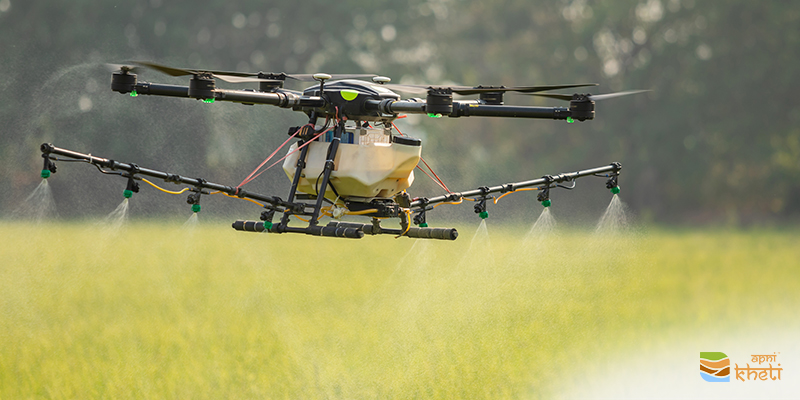Imaging the inspection of your field is hassle-free. Imagine sitting at a position and keeping a close eye on your massively expanded land. Sounds interesting! Right? Lately, the boom of technology has proved to be a blessing for humankind by making daily chores less laborious.
Technology drivers like the internet, smartphones, electricity, drones, robots, computers, etc., have eased an individual’s life. For advanced technical use it is recommended to consider modern agricultural applications that can help you farm smarter. In continuation is, one advantage around the comfort is the invention of the Drone.
A drone is an aerial vehicle that doesn’t require a human pilot but uses its spinning blades to push air down for flying. Many industries adopt this technology, including government, military, agriculture, filming, etc. The reason behind the diversity of its usage is linked with drones making the task easier and less time-consuming.
Recommended Blog – Best Ways to Use Drones for Agriculture
The concept of drones comes under precision agriculture, a management practice that includes analysis, monitoring, and implementing resources such as water and fertilizer in an adequate amount with minimum wastage of inputs. When the right thing is done at the right time in the right way, the work is more efficient and effective, which gradually boosts saving time and money.
Here are some of the advantages of drones that will help farmers understand the drones:
Crop monitoring
As the term suggests, farmers need to regularly check on a field from weed, insect attack, or critical conditions like water logging heavy rain. To keep the land secured, the farmers walk themselves in the depth of the field; however, using drones can help them inspect the surface from a distance.
Fertilizer spraying
Every farmer wants to increase productivity and provide all the nutrients to the plants. To achieve this task, farmers add hard work in applying fertilizer which can be done smartly through drones. Drones can make the job much more convenient without wasting fertilizer.
Seed sowing
The drones also help in modified seed sowing broadcasting. Earlier farmers used to throw the seed throughout the field, and now drones do the same.
Mapping
Mapping is done to optimize the whole agricultural land for cultivation strategically. This practice is used in multiple cropping for mapping the field, and through aerial imaging of the area, this would become easy compared to the exhausting task for the farmer.
Irrigation
A farmer takes one day for 0.65 acres. Perhaps with the use of a sprinkler drone, it would take just 2 minutes. Incorporating drones in the agriculture industry reduces time and saves water.
Plant protection
The yield loss due to insect, pathogen, and animal attacks is significantly high. For that, farmers need always be attentive and keep a check on the field by physically being present there, but with drones, even this would get easier, and the loss can be reduced.
Increased yield
When numerous farming practices such as sowing, irrigation, and fertilizer application are more accessible, the procedure becomes faster. And there is more yield in less time.
Food security
Population and Crop generation are directly proportional. To meet the demand, farmers have to increase the yield in a shorter span, and technology shall be the only rescue. Drones are one way to increase output as it provides the following advantages
Government’s initiative to encourage farmers
The Indian government has effectively encouraged farmers to bring drones to practice by subsidizing agricultural drones up to 100% for certain organizations. The government has allowed an amount of 10 lakhs to institutes like ICAR, state agriculture universities, Krishi Vigyan Kendra, and such institutions that provide farmers’ training.
- Other organizations such as the Farmer Producer Organization can receive a grant of 75% for displaying the working of drones to the farmers.
- In addition, Customer Hiring Centers that help farmers lease the equipment will be granted a 50% subsidy, including the attachment and drone’s cost.
At this moment, we believe that this revolution in the agricultural industry will gradually upscale the productivity of the farmers by helping them enhance their harvesting process and crop life cycle. The incorporation of drones into the sector will ease the work, be cost-effective, and transition towards the paradigm shift into the world of smart farming.
For more information about Agriculture and Livestock, download Apni Kheti app – Android, iPhone





